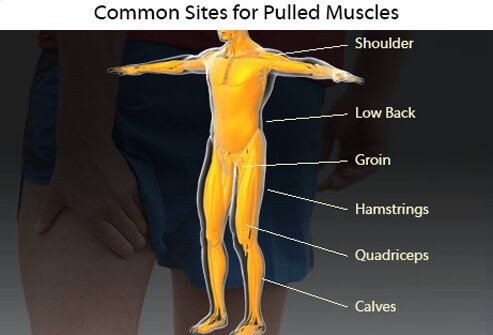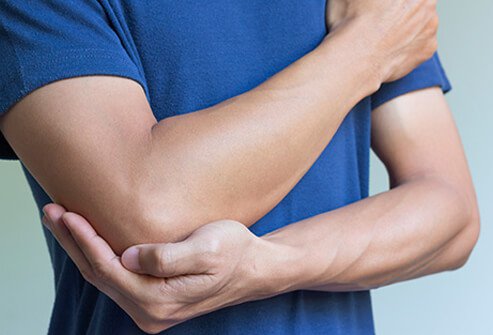Sports injuries are injuries that occur when engaging in sports or exercise. Sports injuries can occur due to overtraining, lack of conditioning, and improper form or technique. Failing to warm-up increases the risk of sports injuries. Bruises, strains, sprains, tears, and broken bones can result from sports injuries. Soft tissues like muscles, ligaments, tendons, fascia, and bursae may be affected. Traumatic brain injury (TBI) is another potential type of sports injury. Dr. Shrirang Kulkarni is the leading Sports Injury Specialist in Pimple Saudagar. we render specialized services in all areas of orthopedic.
Pulled Muscle
Muscle strain is another name for a pulled muscle. It occurs when a muscle is overstretched and tears. Symptoms of a pulled muscle may include pain, swelling, weakness, and difficulty or inability to use the muscle. Muscles in the quadriceps, the calves, hamstrings, groin, low back, and shoulder are the most common sites for pulled muscles. Minor muscle strains resolve with RICE — Rest, Ice, Compression, and Elevation. Nonsteroidal anti-inflammatory drugs (NSAIDs) may help manage pain and swelling as well. More serious muscle strains require evaluation and treatment by a doctor.
Torn ACL
The anterior cruciate ligament (ACL) helps hold the knee joint together and provides stability. A torn ACL is a sports injury that may occur when landing the wrong way, changing direction or stopping quickly, or from a direct blow to the knee. People who suffer a torn ACL may hear a pop and then feel their knee no longer functions. Pain, swelling, and loss of range of motion are symptoms of a torn ACL. It may be difficult to walk. A torn ACL needs to be reconstructed surgically, usually using a graft from another ligament in the patient’s own body. Significant rehabilitation is necessary to restore the strength and function of the knee joint after surgery. Depending on the age, health status, and desired activity level of the patient, some may not elect to have surgery. In that case, braces and physical therapy will not cure the condition, but may provide some relief.
Torn MCL
The medial collateral ligament (MCL) connects the upper leg bone (femur) to the larger bone of the lower leg (tibia). It is located on the inner side of the knee. The MCL is typically injured when the knee joint is pushed sideways when making a wrong move or by receiving a direct blow to the knee. A torn MCL results in pain, swelling, and instability of the joint. The condition is often treated with ice, bracing, and physical therapy. If other structures in the knee are injured or if the torn MCL is severe, surgery may be recommended.
Shin Splints
Shin splints are throbbing, aching, or stabbing pain on the insides of the lower leg. Shin splints are a repetitive use injury that may occur in runners or those who are beginning to exercise. Pain occurs when muscles and tendons around the tibia (the larger of the two lower leg bones) become inflamed. Stretching, resting, and applying ice can help relieve shin splints. Nonsteroidal anti-inflammatory drugs (NSAIDs) can reduce pain and swelling. Bandaging the area may help prevent swelling. Flat feet increase the risk of shin splints. Orthotics and proper athletic shoes may offer support and decrease the risk of shin splints.
Stress Fracture
A stress fracture is an overuse injury that occurs when muscles are no longer able to absorb the impact from physical activity, and a bone absorbs the pressure, resulting in a break. Stress fractures can occur when increasing activity, especially too quickly. The majority of stress fractures occur in the lower legs and feet. Women are more prone to stress fractures than men. Stress fractures cause pain with activity. Rest is prescribed to allow a stress fracture to heal. Sometimes a special shoe or a brace helps decrease stress on the bone, which facilitates healing.
Plantar Fasciitis
The plantar fascia is a ligament that connects the heel to the front of the foot, supporting the arch. Plantar fasciitis is inflammation of this ligament. It causes heel pain often felt the first thing in the morning after getting out of bed or after being active. Stress and strain on the feet increases the risk of plantar fasciitis. Obesity, tight calf muscles, repetitive use, high arches, and new athletic activities are all risk factors for this condition. Plantar fasciitis is treated with rest, ice, nonsteroidal anti-inflammatory drugs (NSAIDs), and special stretching exercises. Cushioning insoles may provide relief. Wearing splints at night may help decrease pain. More severe cases of plantar fasciitis may be treated with cortisone injections, physical therapy, and surgery.
Sprained Ankle
A sprained ankle occurs when the ligaments that support the joint become overstretched. Ankle sprains may occur when playing sports or doing everyday activities. Stepping wrong on an uneven surface or stepping in a way that twists or rolls the foot may lead to an ankle sprain. Sprains and the pain they cause may range from mild to severe. RICE — rest, ice, compression, and elevation — are used to treat ankle sprains. Nonsteroidal anti-inflammatory drugs (NSAIDs) can alleviate pain and swelling. Severe sprains may require a brace or cast for several weeks to facilitate healing.
Tennis Elbow
Tennis elbow is an overuse injury that may be associated with playing racket sports. Plumbers, painters and those in similar professions are also at risk. Tennis elbow involves inflammation of the tendons on the outside of the elbow caused by small tears. Tennis elbow causes pain and may be associated with a weak grip. Rest and nonsteroidal anti-inflammatory medications can help alleviate tennis elbow symptoms. Wearing a special brace on the forearm may help decrease pressure on the sore area. Physical therapy may be helpful. Steroid injections can decrease inflammation. Surgery may be an option for tennis elbow when other treatments have failed.
Low Back Pain
There are many causes of low back pain. Back pain may be due to overuse, such as playing one too many rounds of golf or lifting heavy weights. This kind of back strain usually resolves on its own without treatment. Rest and anti-inflammatory medications can provide relief. Using proper form when exercising and increasing the duration of workouts slowly can help protect the back. In some cases, it may be necessary to modify exercise technique or perform daily activities in a different way in order to reduce the risk of back injury. Other causes of back pain may be more serious and require medical or surgical intervention.
Achilles Tendonitis
Achilles tendonitis is inflammation that causes pain on the lower back of the leg just above the heel. The area may become painful, swollen, and stiff. The pain worsens after physical activity. The tendon may become thickened and, in some cases, bone spurs may develop in the area. Achilles tendonitis may be treated with rest, ice, stretching, and nonsteroidal anti-inflammatory drugs. Strengthening exercises prescribed by a physical therapist may help. Special footwear and orthotics can help take the strain off the affected heel.
Runner’s Knee
Runner’s knee – also known as patellofemoral pain syndrome – is a painful condition that occurs when tendons, joint lining (synovia), and/or other soft tissues of the knee become irritated. Overuse can cause runner’s knee. So can a misaligned kneecap. In addition to pain, runner’s knee may lead to popping and cracking. Switching to activities that do not stress knee joints may minimize problems. RICE – rest, ice, compression, and elevation – may help. Nonsteroidal anti-inflammatory drugs (NSAIDs), physical therapy, and orthotics may provide relief. Rarely, surgery may be an option for severe cases that have not responded to other treatments.
Sports Injury Prevention
Physical activity is an important part of maintaining overall health. However, certain precautions should be taken to minimize the risk of sports injuries. Using the correct equipment and maintaining equipment can help prevent sports injuries. Wearing the recommended protective gear can help shield the body against injury. Resting between workouts gives the body time to rest and repair. Starting activity slowly and gradually increasing strength, flexibility, and endurance gives muscles, bones, and other tissues the opportunity to adapt to more difficult workouts, minimizing the risk of injury. Finally, listening to the body and backing off at the first signs of pain, discomfort, stress, or overheating will help reduce the risk of sports injuries. Dr. Shrirang Kulkarni is a leading Sports Injury Specialist In Pimple Saudagar. His Key specializations are in knees, ankles, shoulders, sports injury, and pediatrics.









